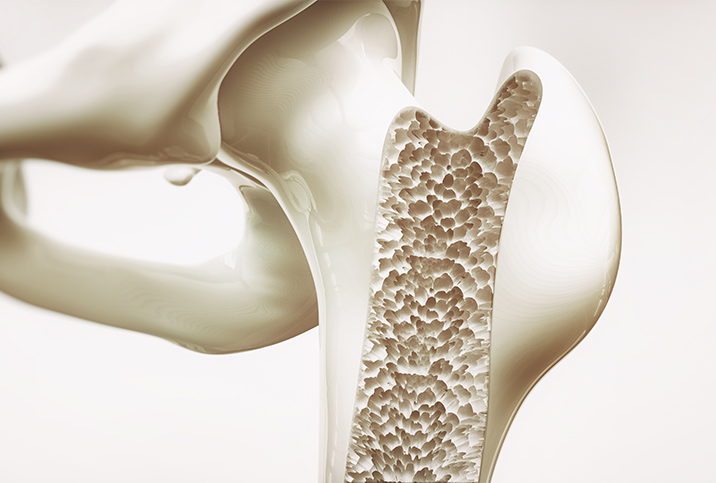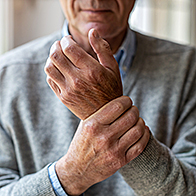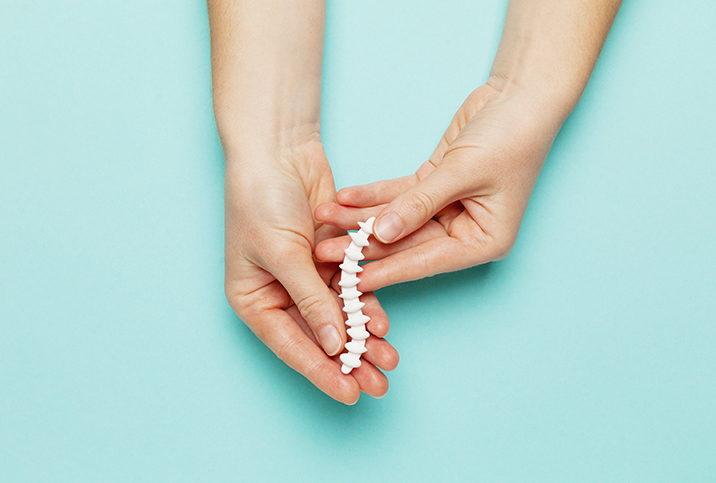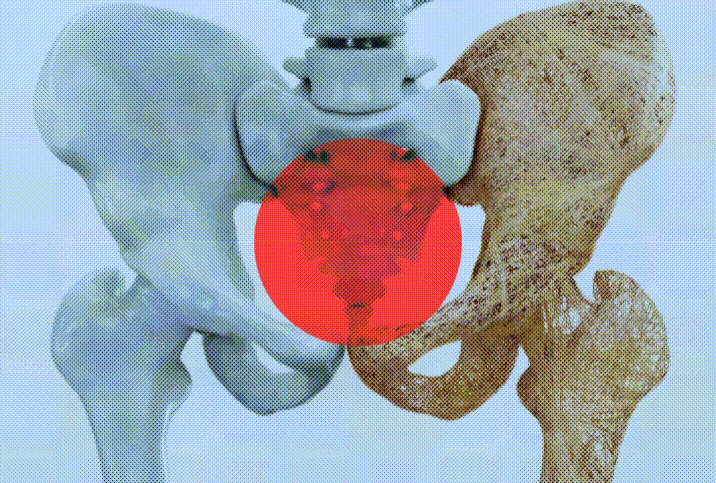Another Potential Low-T Side Effect: Bone Density Loss in Men

Osteopenia, a condition of heightened bone density loss that doesn't yet qualify as osteoporosis, is often undetected until serious injury. Throw in a misconception embraced by too many people that osteoporosis solely targets older women and it's no surprise most people are uninformed about bone density loss in men, particularly younger men.
Jack Jeng, M.D., the chief medical officer at Hone Health, an online men's clinic based in New York City, explained the relationship between low testosterone and a loss in bone density.
"Testosterone is needed to stimulate osteoblasts, which are the cells that form bones," Jeng said. "Estrogen helps suppress osteoclasts, which are the cells that break down bone."
Bone density loss, which may lead to osteoporosis, occurs when the body fails to regrow bones as quickly as those cells get reabsorbed. While osteoporosis in men older than 70 is acknowledged as age-related, idiopathic osteoporosis in men younger than that is generally chalked up to a slew of secondary causes.
Balance is essential
Low testosterone may be one of those factors, but Jerry Bailey, D.C., the clinical director of Lakeside Holistic Health in Coeur d'Alene, Idaho, explained estrogen isn't the enemy here; rather, an imbalance of the two sex hormones is.
"Testosterone binds to androgen receptors in bone to promote bone growth, but testosterone also converts to estrogen to slow bone resorption [or] bone demineralization," he said.
This state of constant renewal means that by 30 years old, the average human has regenerated about five whole skeletons, according to some estimates. This is a brisk pace of absorption; no wonder the body might fail to keep up, which can lead to premature osteoporosis.
"For many years, osteopenia and osteoporosis were considered an age-related issue," Bailey said. "However, we are now seeing these in the younger population, with increased estrogen levels, decreased T levels, increased body fat, decreased lean mass and relative inactivity in men from the 20s and on up."
The factors Bailey listed are secondary causes for osteopenia, which means they may not cause the condition but contribute to its likelihood. For instance, a loss of lean muscle deprives the skeleton of the necessary soft-tissue protection it requires. The lifestyle and diet leading to this loss of muscle has other ramifications, but bones of any density become more vulnerable because of this effect.
Signs of bone density loss
Despite being called a "silent disease" because severe bone density loss in men often isn't detected until a fracture occurs, osteopenia does present various warning signs of a developing issue.
"Bone pain and muscle pain daily with no activity is an early determinant of bone loss," Bailey said. "Key factors [include] weight gain, waist circumference increasing, the growth of 'man boobs,' cholesterol issues, glucose issues and general deconditioning from an inactive/sedentary lifestyle."
Jeng spelled out a few more common symptoms of decreasing bone density.
"They will typically have signs and symptoms like reduced sex drive, erectile dysfunction, muscle loss, weight gain, poor mood, irritability and depression," he said. "In advanced stages, men with poor bone density can suffer from frequent bone fractures."
Obvious physical signs include a loss of height and back pain as the spine degrades, according to Paul Thompson, M.D., a Fort Worth, Texas-based urologist and surgeon and the chief medical officer for Launch Medical, a men's sexual health company based in Los Angeles.
Fighting bone density loss
The methods to combat this condition are varied and some can be used on your own, such as lifestyle adjustments that can augment and precede hormonal therapy.
"Using testosterone hormone therapy is one way to help increase bone mass and longevity in men," Bailey said. "Dark-green leafy vegetables, broccoli, salmon and smaller cold-water fish with bone-in, like sardines, all are excellent ways to increase bone density. Increasing weight-bearing exercise and strength training to build more muscle mass will result in increased bone density. Minimizing dairy intake [is] another excellent way to increase bone density while decreasing acidity in the body."
While much of this advice is conventional health wisdom, a few nuances are worthy of additional attention. Bailey doesn't stress cardio workouts as much as strength training. And despite dairy products being the most obvious sources of calcium, dairy has recently been challenged as further acidifying the body, meaning bones break down more quickly. Nondairy calcium powerhouses include collard greens, bok choy, broccoli, certain legumes and many more.
Jeng has ideas about some specific substances that contribute to bone health.
"Men should also stop smoking tobacco or drinking alcohol, and certain medications, like glucocorticoids, may also need to be stopped," he said. "Patients should always talk to their doctors before stopping any medications."
Tobacco and alcohol are often the first substances patients are instructed to stop using. Alcohol inhibits the body's calcium intake, and while the link between tobacco use and osteoporosis may be a result of secondary factors—think less exercise or increased alcohol consumption—the relationship has been demonstrated for decades.
Glucocorticoids are a classification of steroidal hormones, including (but not limited to) cortisol and prednisone, and are typically prescribed to treat cancer, autoimmune conditions and inflammation.
The good news is low testosterone, calcium levels and bone density can all be checked with blood tests. Hormonal shots aren't to be taken lightly, and lifestyle changes contribute greatly to overall health as well as bone health.
Bailey noted the severity of osteoporosis and bone density loss in men.
"Men have a relatively low risk of about 20 percent for bone fracture with age," he said, "but men are more prone to have longer-term disability or death due to osteoporotic fracture in comparison to women."




















